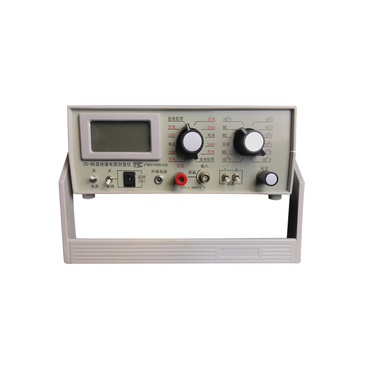digital profile projector
Understanding Digital Profile Projectors A Modern Tool for Precision Measurement
In the realm of optical measurement and quality control, the digital profile projector stands out as a vital instrument for engineers and quality assurance professionals. Combining advanced optics with digital technology, it has transformed the way companies measure and inspect parts, ensuring accuracy and efficiency in manufacturing processes.
The Functionality of Digital Profile Projectors
A digital profile projector, often referred to as an optical comparator, utilizes a light source to project a magnified silhouette of an object onto a screen. The process begins when an item, typically a mechanical part, is placed on the projector's stage. The light shines through the part, creating an image that is then enlarged. This enlargement allows operators to examine finer details that might be difficult to see with the naked eye.
The key feature that differentiates digital profile projectors from their traditional counterparts is the integration of digital imaging technology. Equipped with high-resolution cameras and sophisticated software, these projectors can capture precise images and measurements, displaying them on a digital screen. This not only enhances the visibility of the details but also automates the measurement process, reducing the potential for human error.
Advantages of Digital Profile Projectors
1. Precision and Accuracy Digital profile projectors offer high precision measurements to a fraction of a millimeter, making them ideal for quality control in manufacturing environments where tolerances are stringent. They are widely used in industries like aerospace, automotive, and electronics.
2. Easy Data Comparison With built-in analysis software, operators can easily compare dimensions against pre-defined parameters or historical data. This capability simplifies the process of determining whether parts meet specifications and facilitates immediate reporting.
3. User-Friendly Interface The digital interface allows for intuitive navigation, enabling operators to perform measurements quickly and efficiently. Many models feature touch-screen capabilities and customizable settings, making them adaptable to various types of analysis.
digital profile projector

4. Versatility Digital profile projectors can be utilized for a wide range of applications—measuring contour shapes, angles, and other geometric features. They can also be employed for simple part inspections as well as complex quality assurance assessments.
5. Portability Unlike some bulky measuring instruments, modern digital profile projectors are designed to be compact and easily transportable. This portability allows for in-field inspections, making them versatile tools for on-site quality control.
Applications in Various Industries
The range of applications for digital profile projectors is extensive. In the automotive industry, they are used to ensure the accuracy of engine components and assemblies. The aerospace sector relies on them for the meticulous inspection of critical parts, ensuring safety and compliance with industry standards. Electronics manufacturers utilize digital profile projectors to examine small, intricate components, ensuring they meet exact specifications.
Moreover, educational institutions and research facilities are adopting these sophisticated tools for teaching and demonstration purposes, introducing students to advanced measurement technology.
Conclusion
As industries continue to evolve, the demand for precision measurement tools like digital profile projectors will only increase. Their ability to provide accurate and instantaneous measurements, coupled with advanced digital features, positions them as indispensable tools in quality assurance and engineering. With the continuous advancement of technology, we can expect to see further enhancements in the capabilities of digital profile projectors, making them even more integral to manufacturing and inspection processes.
In summary, digital profile projectors represent a significant advancement in the measurement and quality control landscape. By bridging the gap between traditional optical systems and modern digital technologies, these instruments not only improve accuracy but also enhance efficiency, paving the way for innovations in various industrial applications.
-
Why the Conductor Resistance Constant Temperature Measurement Machine Redefines Precision
NewsJun.20,2025
-
Reliable Testing Starts Here: Why the High Insulation Resistance Measuring Instrument Is a Must-Have
NewsJun.20,2025
-
Flexible Cable Flexing Test Equipment: The Precision Standard for Cable Durability and Performance Testing
NewsJun.20,2025
-
Digital Measurement Projector: Precision Visualization for Modern Manufacturing
NewsJun.20,2025
-
Computer Control Electronic Tensile Tester: Precision and Power for the Modern Metal Industry
NewsJun.20,2025
-
Cable Spark Tester: Your Ultimate Insulation Assurance for Wire and Cable Testing
NewsJun.20,2025
 Copyright © 2025 Hebei Fangyuan Instrument & Equipment Co.,Ltd. All Rights Reserved. Sitemap | Privacy Policy
Copyright © 2025 Hebei Fangyuan Instrument & Equipment Co.,Ltd. All Rights Reserved. Sitemap | Privacy Policy
